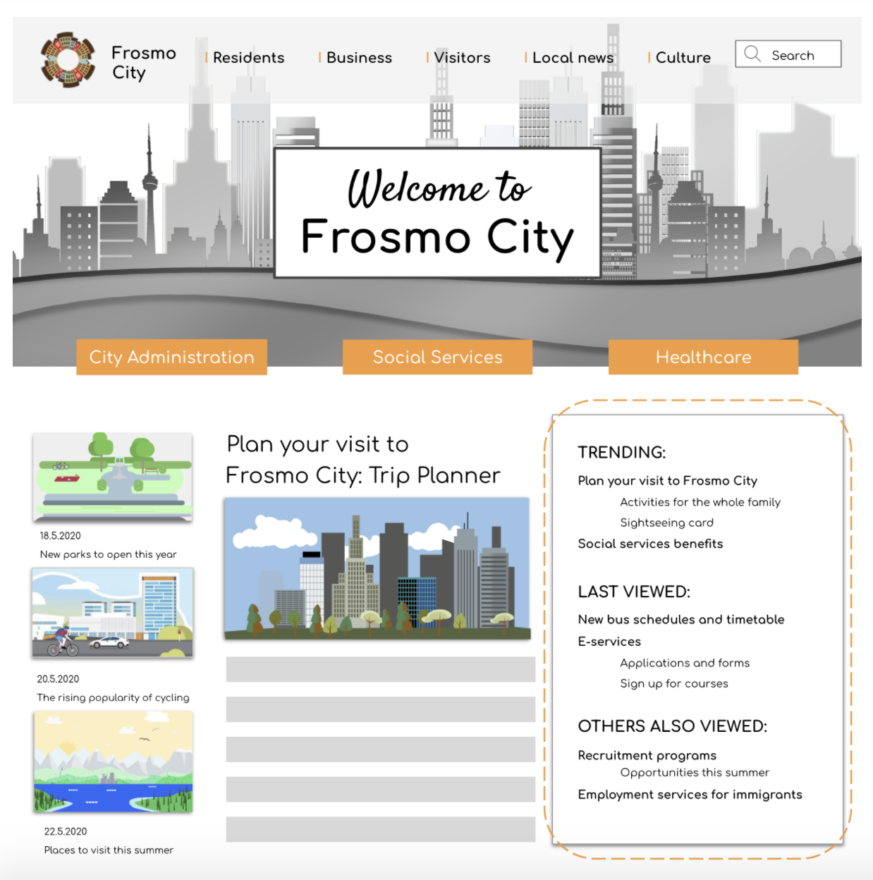How website personalization delivers effective communication in the public sector


Maija Erkheikki
The concept of personalization has been ongoing in the retail industry for years now. But for the public sector industry, municipal leaders are just starting to realize the potential of crafting customized customer experiences based on user behavior and context.
Many government websites host a vast variety of content, information, and news that is easily comparable to a big corporation operating in various businesses. Even a small local government site might host information about parking permits, daycare services, tourist attractions, and building permits while trying to attract new employees – just to mention a few. An unexpected situation like the COVID-19 crisis adds another layer of complexity for communication.
Web visitors want to have the information they need without spending any extra time on the site. If the information is difficult to find or not interesting enough, web visitors will end up contacting the call centers which will then add up to the overall costs of the service.
Personalization helps the users find the information according to their interests thus making the service relevant and more engaging. For citizens, it’s important that the user experience is seamless, regardless of the different administrative boundaries. The visitors seek great usability and the easiness to find information.
The benefits of personalization in the public sector:
- More relevant messaging saves the resource of call centers and have a direct link to cost savings.
- Employees are happier due to reduced routine work-load in support.
- Make all information and content easily accessible across administrational boundaries for all citizens.
- Better digital services bring more satisfied visitors that engage more with the content.
- Allow rapid pervasive response to evolving situations by allowing targeting content to certain groups.
- Achieve all these without expensive systems projects or adding manual labor.

Easy way to start personalization
Personalization can take many forms, but to ease the adoption, we’re recommending to start with the following use cases that are very easy and fast to implement to any public sector site:
- Content recommendations: Frosmo helps site visitors find the correct content by using AI algorithms to recommend relevant content. Recommendation strategies include ‘Visitors who viewed this article also viewed’ and ‘Trending articles right now’.
- Local governments find location-specific personalization interesting as it consists of many geographical areas hosting their own services and events. Site visitors can select their area of interest or the technology can detect their approximate location. This has been popular because otherwise, the local content is buried under the general content or administrative categories.
- Targeted pop-ups or ribbons to communicate urgent information like the COVID-19 related instructions and most recent updates.
Personalization and GDPR
Many are concerned about GDPR. Frosmo is fully GDPR-compliant. Personal data is not needed to provide dynamic and relevant website experiences.
Read more about the solution for the public sector and the privacy policy.
About the writer:

Maija Erkheikki has over 15 years of experience in the international software industry and is driven by a passion to use technology to improve the quality of life. This passion was best exemplified in her role as a consultant for healthcare companies, working on business processes and performance management. This led to a career in the partner-driven software business, where it is critical to build win-win-win models. Currently, she is fascinated by the digitalization of commerce and how artificial intelligence reshapes all industries.